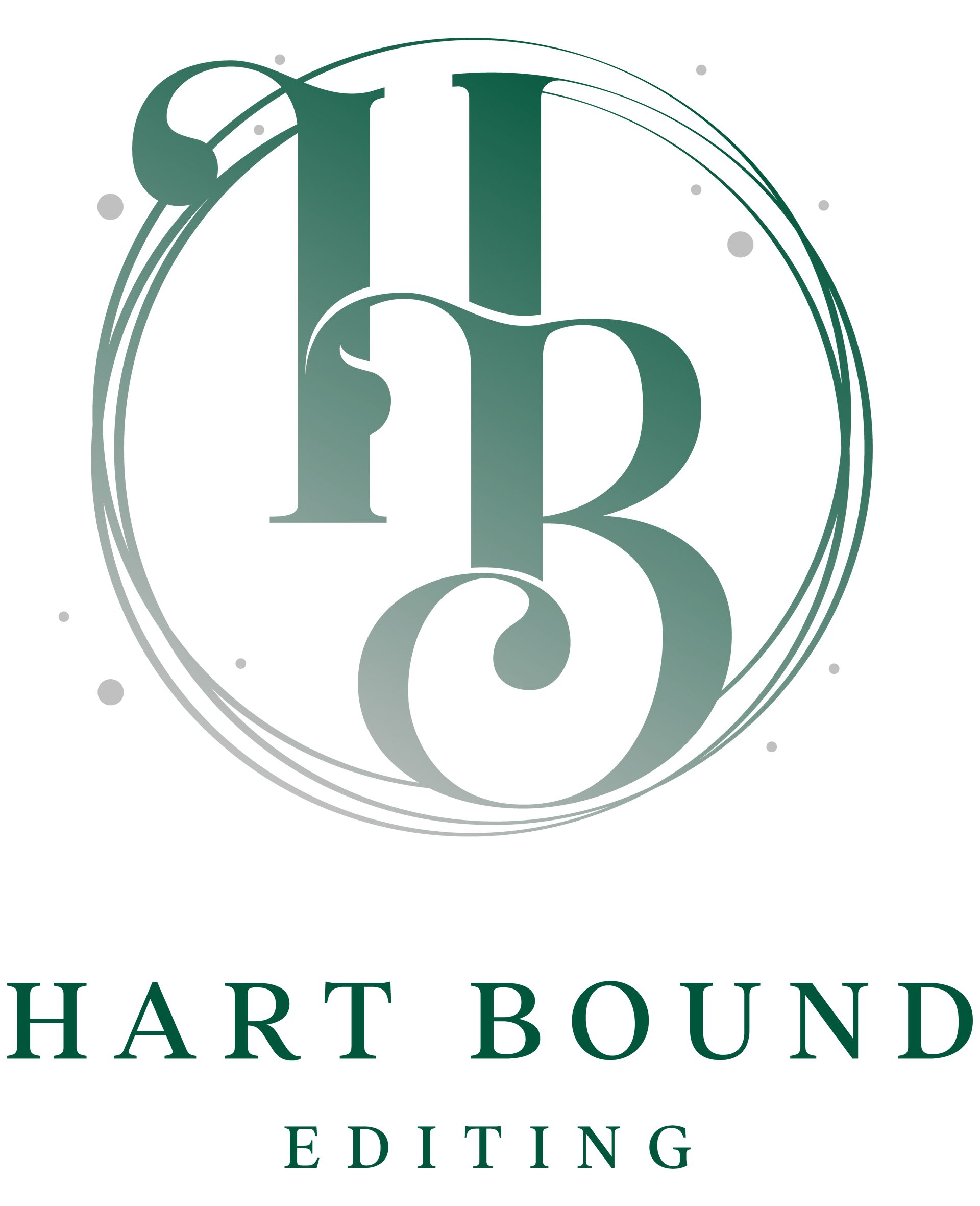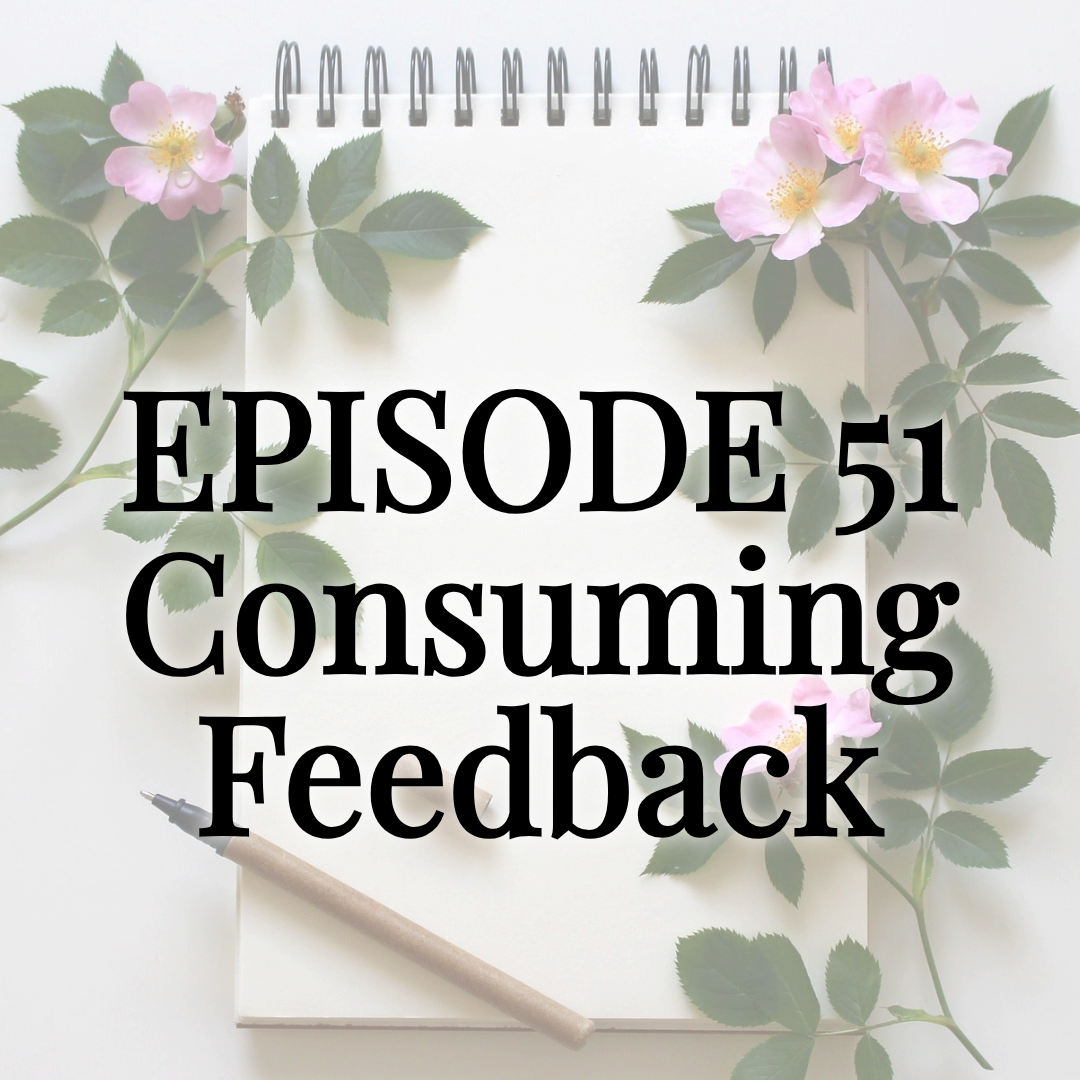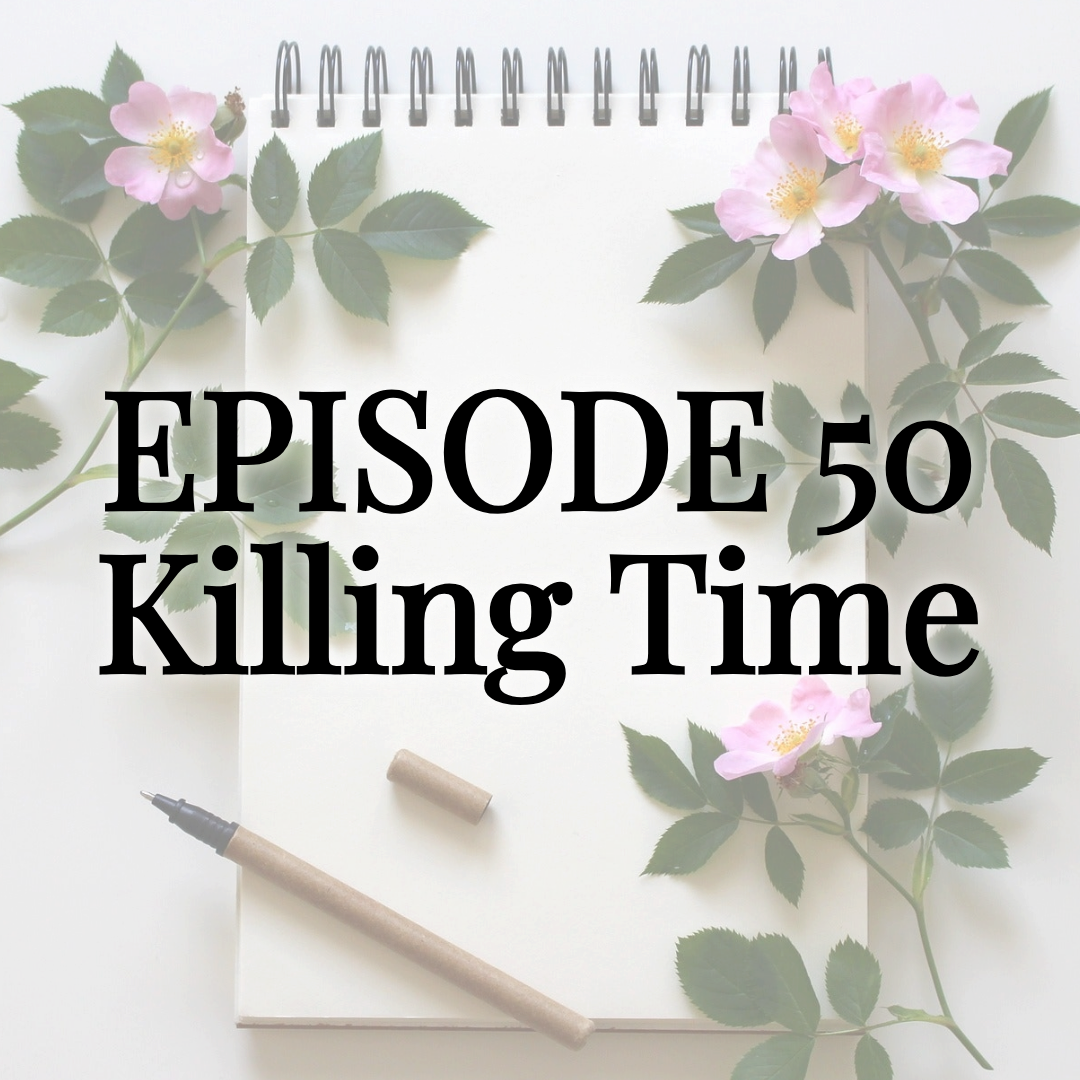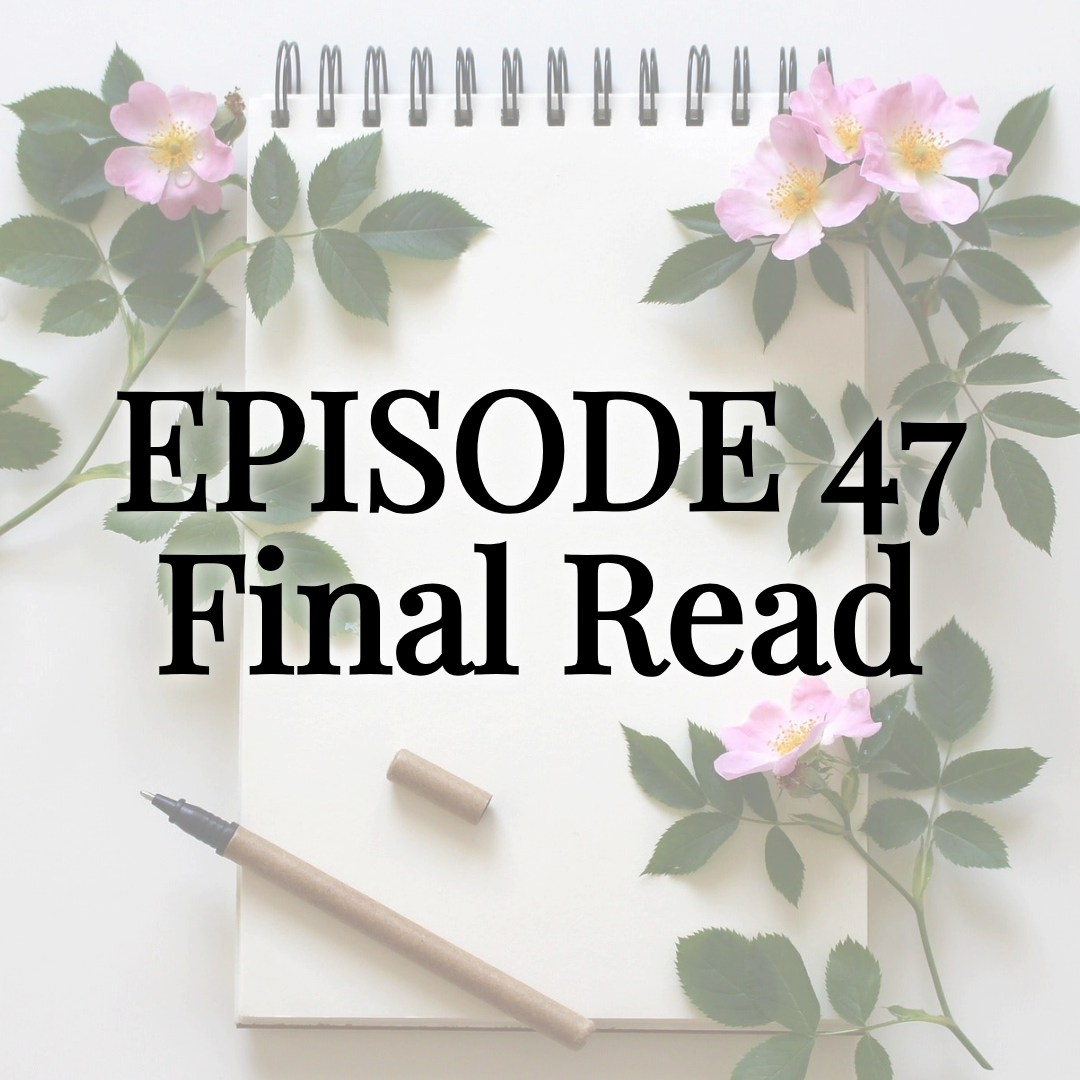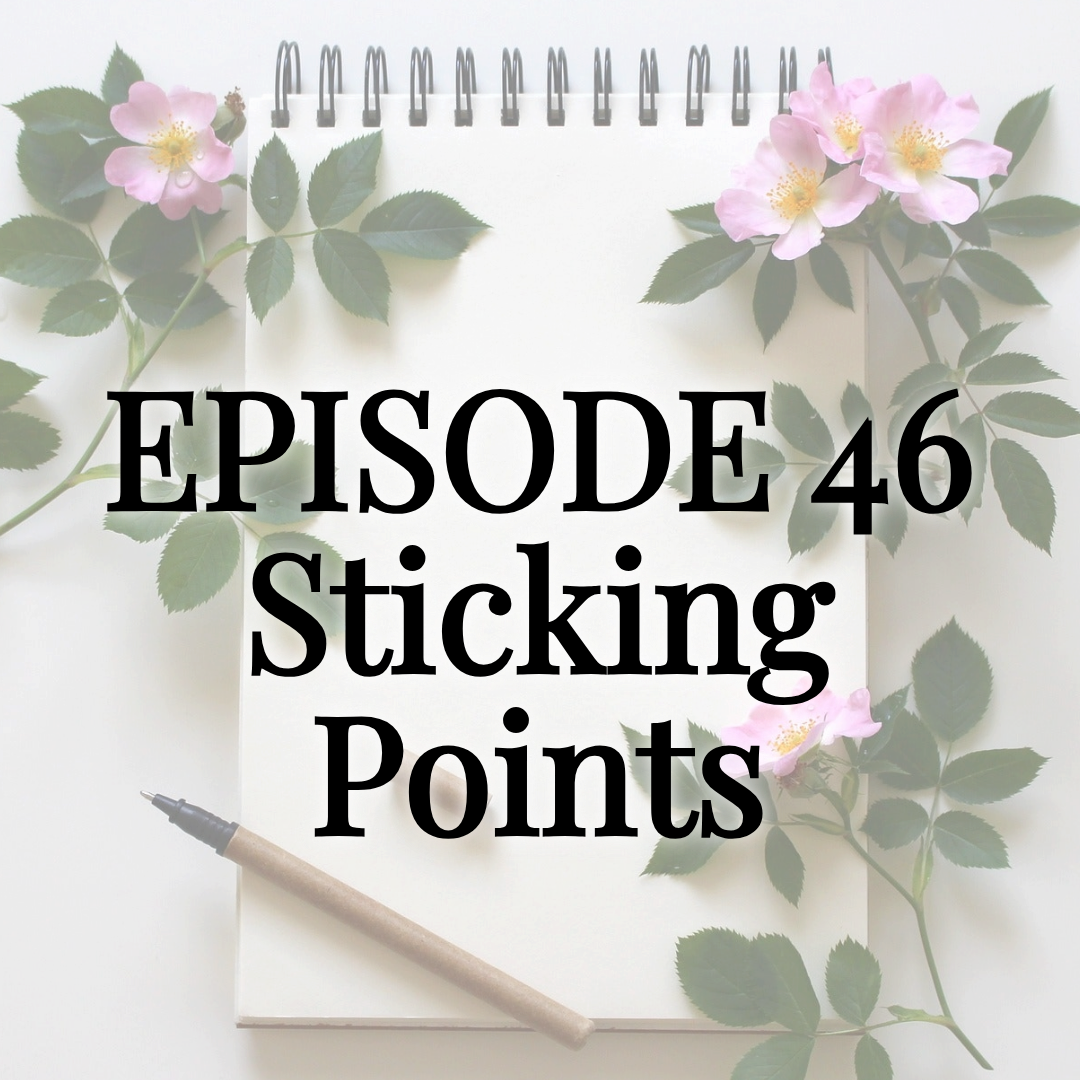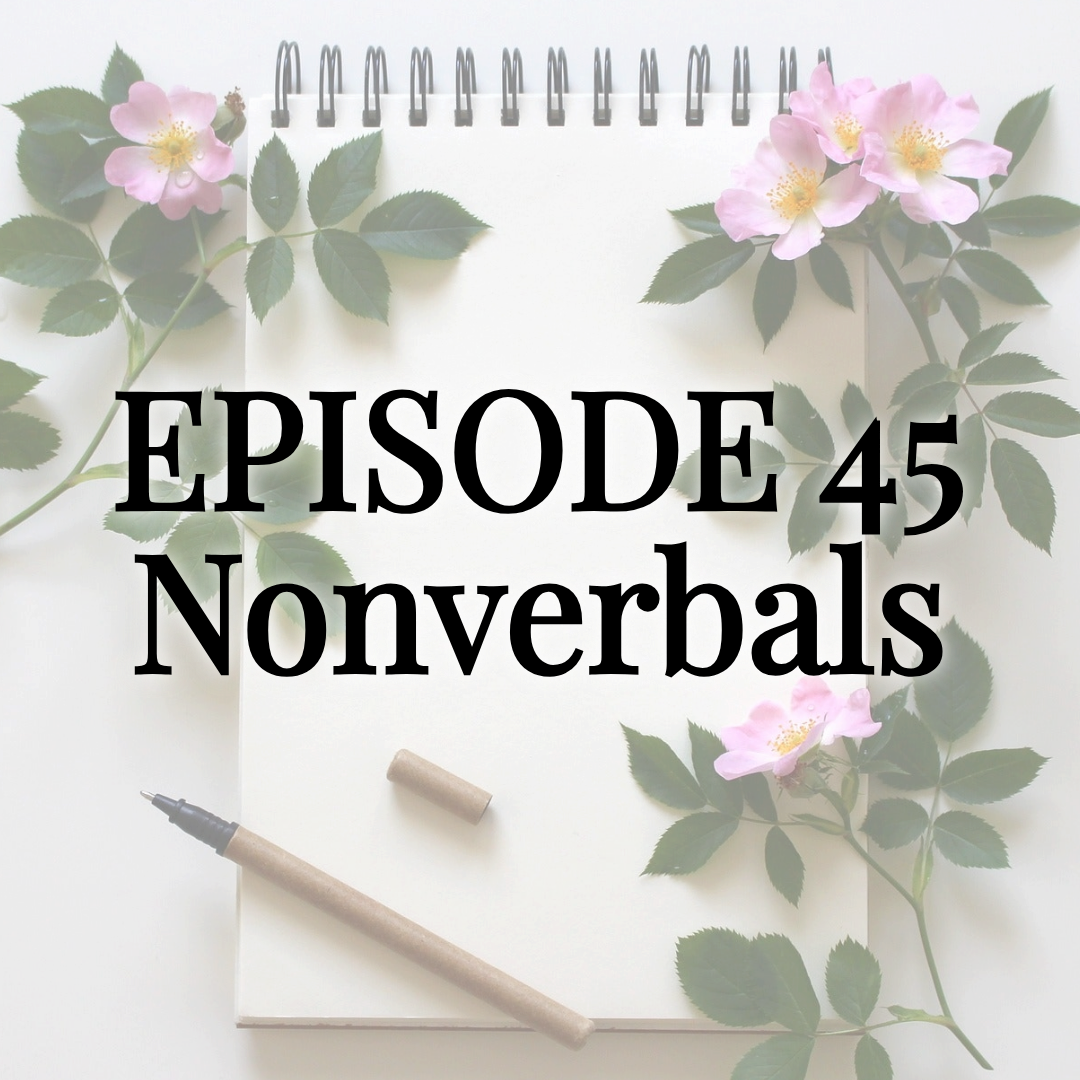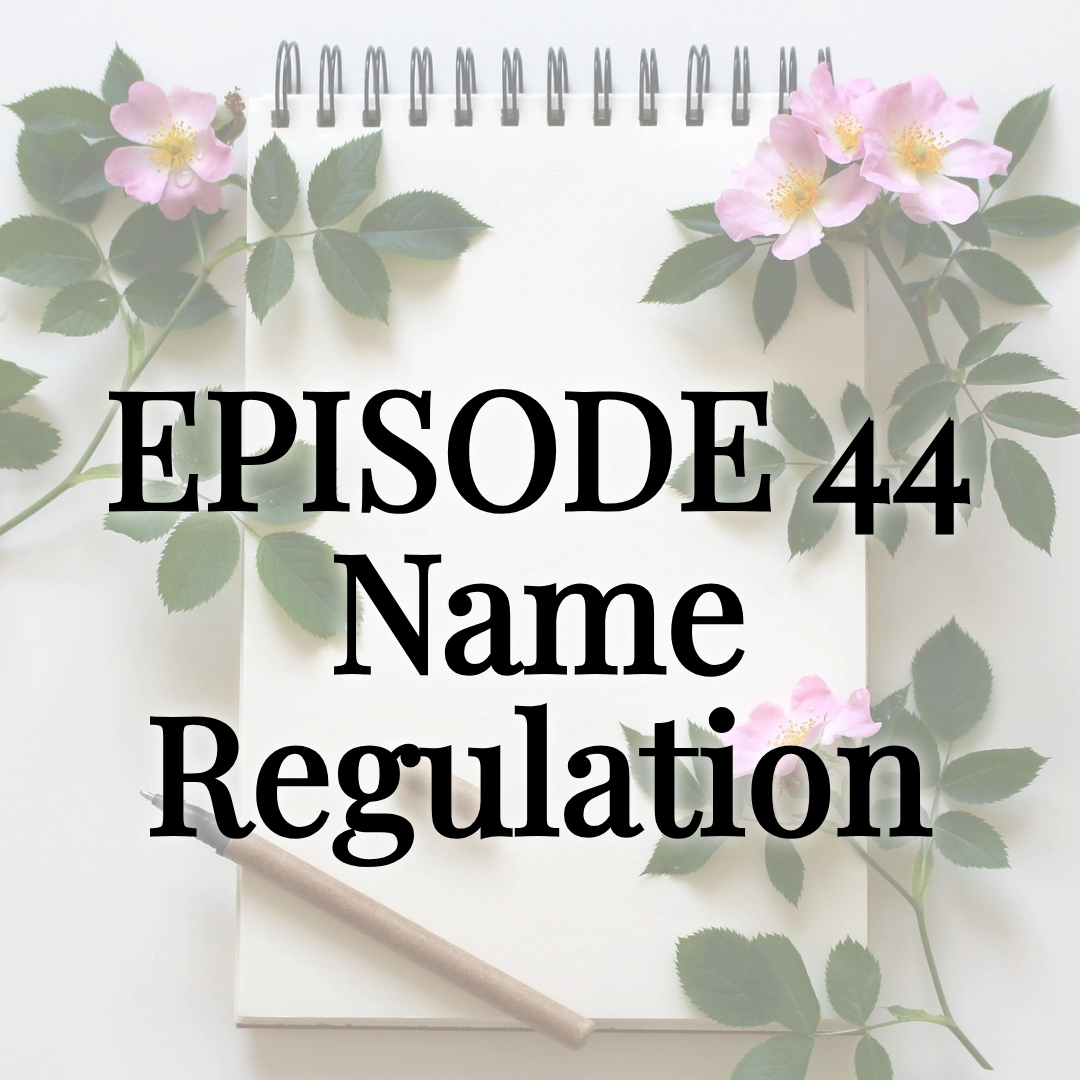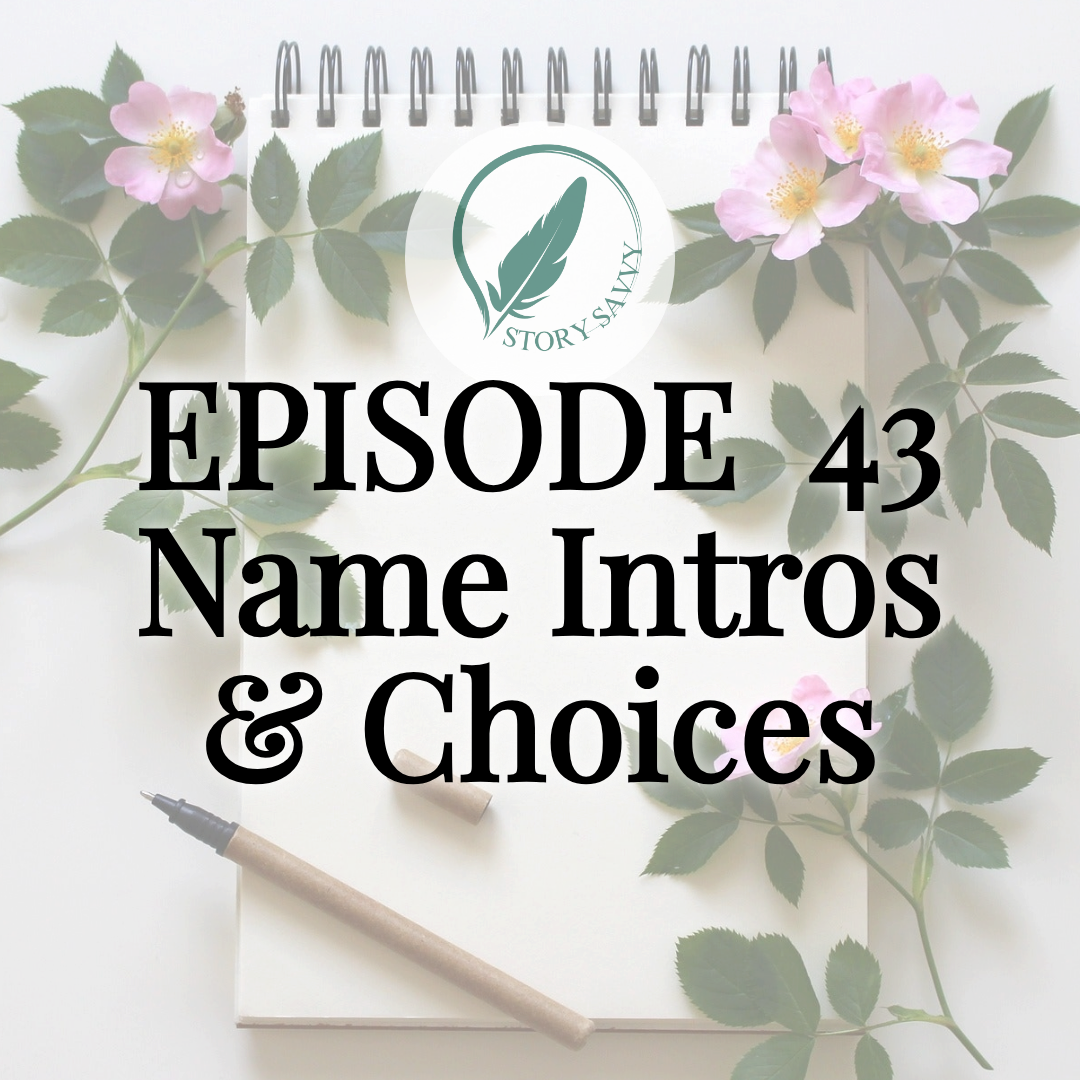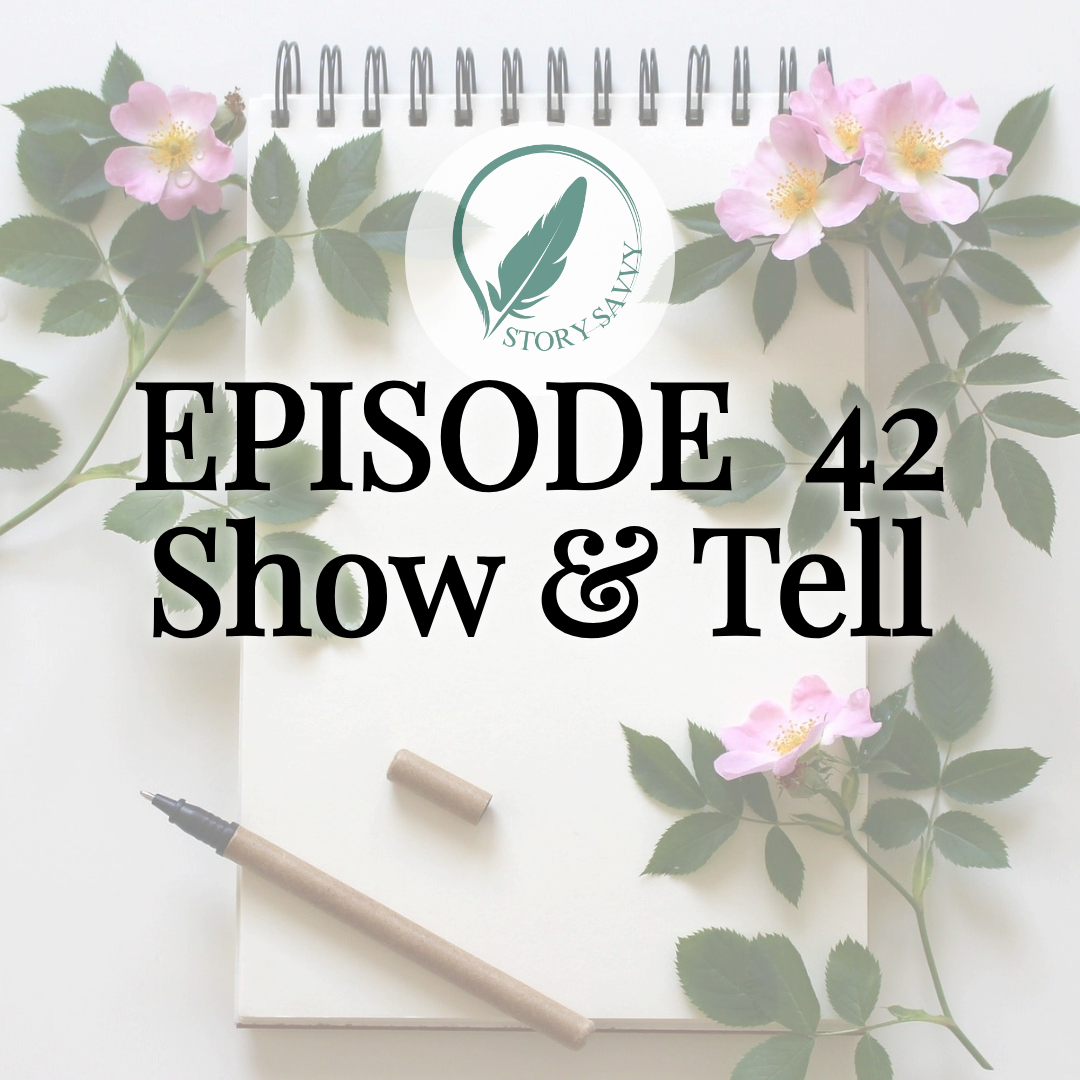Sensory Immersion - Sight & Sound: Story Savvy Self-Editing Episode 34
Sight & Sound: After-episode thoughts, overview, and transcript…

I failed to meaningfully address specificity as a great tool on this topic. More specific detail communicates higher importance and relevance. Generalizations and vagueness communicates lower importance and relevance. So, within your good judgement, what kind of scene it is, and maintaining balance between dialogue, action, and description (not overdoing any), add specificity to make moments bigger, and reduce specificity to make moments smaller.
The other episodes I mention in this one are
Episode 25: Subplots & Plot Threads, and
Episode 31: Avoiding Scene Stagnation.
Happy editing!
Episode 34 Overview:
Sensory Immersion - Sight & Sound
“Am I using sounds beyond dialogue and visual descriptions to add to my world building, deepen immersion, and add interest to my story?”
In this episode of our podcast for fantasy authors, we dive into self-editing strategies for writers focused on sensory immersion through visual and auditory descriptions—critical yet often overlooked elements of story world development. Developmental editor Rebecca Hartwell shares insights on using descriptive details to actively shape character actions and scene direction, and improve the reader experience. Learn how integrating sights and sounds beyond dialogue can heighten immersion, deepen your POV, and reinforce tone.
Developmental editor Rebecca Hartwell is joined by the host of Author's Alcove Agnes Wolfe in this first of two episodes on how to check that you are using enough sensory description in your novel, and that all five senses are balanced.
Chapters:
00:00 Introductions
01:42 Why Only Sight & Sound Today
03:20 What Gets Forgotten The Most
04:47 Using Senses To Strengthen POV
08:49 Tips Around Adding More Visual & Auditory Descriptions
13:08 What TO Describe Early In A Novel
16:39 Forgotten Opportunities For Sensory Descriptions
19:26 Writing More Purposeful Descriptions
21: 20 Common Mistakes
23:24 Genre Expectations Of Sensory Descriptions
25:42 Different Scene Types For More Or Less Description
27:19 Using Sensory Description To Affect Momentum
29:55 Wrap-Up
Resources:
Author’s Alcove Membership: www.authorsalcove.com
Fantasy Book Giveaway: www.authorsalcove.org
See you next week for episode 35: Sensory Immersion—Touch, Smell, & Taste!
Episode 34 Transcript:
Sensory Immersion - Sight & Sound
Rebecca Hartwell: Hello and welcome to the Hart Bound Editing Podcast. This is episode 34 of the weekly Story Savvy series, where we tackle the 52 biggest self-editing topics and tips to help you make your good story great, as an aspiring author asks me, a developmental editor, all of the questions that you have wanted to. We have covered a bunch in this series so far, including the last two episodes on tangible and intangible world building. Today, we are going to take a look at self-editing for sights and sounds. By the end of this episode, you will hopefully feel confident checking your use of sight and sound cues and descriptions in your book to make sure that your novel is immersive, interesting, and balanced. Joining me to ask all of the questions is my good friend and co-host, Agnes Wolfe. Welcome.
Agnes Wolfe: Hi, I'm an aspiring fantasy author who hopes to release her first middle grade fantasy later next year, and also host and founder of Author’s Alcove. I'm here today to tackle the topic of sensory immersion between the episode and the next. I think that one of the biggest pieces of advice editors and teachers will write to writers I hear all the time is, show, don't tell. And I think writing through all of our senses is a huge part of that. Although today, we are only covering two of our senses, and next week we will be going over the three others. What senses do you feel writers tend to neglect most frequently, and why are you starting with these two?
Rebecca: Sure. So… First off, yes, show don't tell can apply to using sensory immersion, and we will be doing a whole episode just on show, don't tell later in the series, so we will get into it very deeply when we get to that topic. Why I'm getting to sights and sounds first is because I feel like these two are mandatory to include in any kind of book, perhaps an exception if your characters are blind or deaf but, the other three are more optional, so tackling these two that I feel is more mandatory. Again, first off is why we're separating it out. So, talking to the other points there, I think that most people easily reach for sight when they think about adding sensory immersion. Sound is probably the second most easy-to-reach for and grasp automatically, and then taste, touch, and smell are probably the most neglected. But that's okay. I think that it's fine to prioritize things in that way. You really don't need to, or even shouldn't, use all of these senses in equal amounts. In fact, I recommend that you don't even get anywhere near trying to use all five senses in equal amounts, and we will talk about that in a lot more detail next week. For this episode, in regards to what gets forgotten the most around sight and sound specifically, I would readily say that it is sound other than dialogue, and adequate visual descriptions of the protagonist that I notice lacking in a lot of novels. So, if you want to do the simplest, quickest check on these two senses, make sure that you are including some sounds that have nothing to do with speaking or language, and that you are telling your readers how to picture your main character, although I do warn you away from going overboard with that particular one. I typically recommend, for describing your protagonist, that you provide rough age, gender, height approximate. Hair color, and one other distinct characteristic, and that could be scars, freckles, tattoos, piercings, makeup, anything like that, and that you spread these out over a few early mentions in the book. You don't cram it all into one paragraph, but you also don't wait until halfway through the book to mention one of these details. You can obviously decide you want to provide more visual details about your protagonist, but this is a baseline to start with, if you need one.
04:47 Agnes: So, I know that we often use, especially, visual and sound to really do a lot of our world building, but I know that one of the goals that we want to make sure that we're doing is that also making sure that the experience is through our point of view character's experience. So, thinking specifically about sound and sight, because that's what this one's about, how can we go beyond just writing the visuals of the world but making it more about our point of view characters' experience?
Rebecca: This is a great question and a great point. So, just to reiterate pretty much what you just said there, focusing on these senses can really help get into the character's head, and this applies for the author as much as the reader. I have found that really leaning into these sights and sounds and other senses can very much help the writer stay in a particular character's POV and avoid head-hopping. When I find head-hopping in books, this is one of the tools that I will recommend for addressing that or catching that. So, to your question specifically. There are a few ways that you can use sights and sounds more meaningfully about your character's experiences. First, try using descriptions to illustrate what the characters are paying attention to. So, one character is going to notice the beautiful colors of the sunset, and a different character is going to notice the thunder clouds creating this sunset. So, paying attention to what you're describing in the context of what would this character's priorities and personality, goals, motives, and conflicts choose to notice, either consciously or subconsciously, and making those choices in what you describe can help illustrate those deeper layers of the character for your reader. Second, I suggest that you use that character's vocabulary for the descriptions more than you use your own words and ways of looking at things. So, like with what they notice, how do they describe what they notice to themselves, or in the narration? Again, using that sunset as an example. One character might look at it and go, “Wow, that's pretty!” and a different character with a different personality and vocabulary would go, “Can you look at those layers of vermilion and baby pink and daffodil yellow? I love how they're mixing, and with the blues there, it goes into a little bit of a, oh, how would I describe that color? Like a lime green?” The different characters are going to have different vocabularies and different ways of choosing to describe visuals, auditory, whatever. So, again, using that can help illustrate without having to state anything those deeper layers of the character. Third, I suggest that you consider how an observation affects the protagonist in that moment, and affects how they move forward from it. As a somewhat extreme example of this, maybe your protagonist hears a beeping as they are passing a locker in a train station, and that sound cue forces them to react. Let's say they go to the train station management or security is like, “hey, I think there's a bomb in that locker”, and that is going to force the rest of the story, or at least the rest of that chapter, to go in a very different direction than if they hadn't heard that non-dialogue auditory cue. Or as a slightly less extreme example of that maybe, because the protagonist is admiring this rolling sunset and landscape beyond their city walls they accidentally end up witnessing a major plot point in the foreground. Stuff like that can be very helpful in making your choice to include a detail mean something to the story being told.
Agnes: I really love what you were saying about the vocabulary, because it got my wheels spinning, because I realized, you know what? You know, that doesn't just apply with sound and sights, it applies to the entire point of view. And so that just really, I really appreciated that you shared that particular specifically. But one of the things that I noticed about my biggest weaknesses is that the only time I use sound is in dialogue. I have to admit, as I was writing my own story, it didn't even cross my mind to describe, I know one of the suggestions you had said, that I actually just recently said, it was like, “How does it sound when it rubs against the ground? What is the ground like?”, and I realized I didn't really describe what the ground of this room was like. And so, I realize, as I've been going through after you looked through it, to add sound. And then, of course, we're going to talk about smell and, you know, all of that later. So now that I am adding sound into my story, are there any rules or other things I should consider as I add this element to my writing, or specific advice for adding more, even, visual descriptions?
Rebecca: Sure. Specific to sound, I suggest leaning more towards frequent, simple mentions of other sounds versus in-depth descriptions at any frequency. For example, let's say in your descriptions of a scene, you want to say that doves are cooing as your protagonist leaves their house. That's great. What I suggest you don't do is then also visually describe the doves, and decide what species of dove they are, unless this is very relevant, maybe your character is an ornithologist, and definitely do not try to describe the sound of the coos themselves. People know what a dove cooing sounds like. You don't need to describe the quality or the volume, or the measure of that sound. Leave it short and simple, and drop these in in a couple of words, a literal handful of words, 5 or less, here and there, rather than making a big deal out of including these sounds. Essentially, you want to get back to the plot as soon as you can. And then for sites, I suggest remembering that you will never be able to get readers to picture things exactly the same way that you do. It just cannot happen in this written medium. So, rather than trying to achieve that with your visual descriptions, I suggest picking a couple of the most important specifics you think really, really matter to the story and the world and the character and the reader, and let there be variety in these other specifics. On the other side of that, remember that you do need to give the reader visuals for characters and settings, and occasionally refresh those visuals. Almost no story can function as blank mannequins moving around flat, empty spaces. So, for both sights and sounds, I also suggest looking at what subtext a sound could carry to make it worth mentioning, or a visual could hint at something coming later. For example, a clicking floorboard could indicate that the house is old without you ever having to state it outright. The sound of frogs and crickets could tell the reader the chapter is opening outdoors at night somewhere with a wetter climate immediately. Describing that the house the protagonist is starting the story out in is built from Adobe tells the reader a lot about the climate, and probably region, and culture that this story is opening with, with one description of the color and texture of the walls. So, try to use these to mean something, not just to be there for the sake of them.
Agnes: So, I know, I love what you're sharing, and it kind of reminds me of the fact that, especially the draft that you read, which, this scene is now no longer there, But, you pointed out that I did not quite define where, what time frame mine was. And so you wanted, and in mine, the original draft started in the kitchen, it no longer is there, but that's where the original draft had started, and you asked me very specific questions, like, “I want to know is this medieval? Is this Renaissance? Is this…” she goes, so you ask me, “What type of pan was he using? What type of table? What type…” and it started to sort of make me realize, you know, oh, for one, I have to decide that, yes, I actually have to choose a time frame, and two is I have to describe that time frame. So, aside from giving cues, you know, not just on time frame and setting, what are some other things we should also consider with our descriptions, specifically at the beginning of our book, to really set the stage for the world that our readers are going to enjoy?
Rebecca: Great points there about using some cues to let the reader make other correct assumptions. There are a couple of other things that I would list here to make sure that you get to earlier on in the story, as establishing, like you were talking about. Like I had mentioned before, describe who your character is visually and physically, and how they sound. And for how they sound, this can mean externally, so how they choose to speak, and their vocabulary, but also, their internal sound, so if you're using internal thoughts, what is their self-talk like? Is it neutral? Is it very self-aggrandized and important? Is it very self, you know, shaming, self-deprecating? All of that can really help set the stage for the story. You can also put effort into setting your tone using your sensory descriptions. Your chosen opening setting or how you choose to describe any of the objects in this setting can go a long way towards your reader having a general vibe understanding of the story and allow you to communicate, “hey, this is going to be comedy, this is going to be tragedy, this is going to be drama”, whatever the tone you're going for is. And then, lastly, I suggest picking one visual or auditory thing to describe.
That you can attach a significant emotion, investment, or that kind of thing, to, for your protagonist. I feel like I phrased that poorly, so let me try phrasing that again. Find something that you can describe as a sight, sound, smell, touch, or taste that is going to bring up a strong emotional connection in your protagonist, a strong emotional reaction, or that you can show this person, this character, has a big investment in, in some way or another. What this can do for your story is go a long way towards connecting your character to their world, which will help your reader connect to the character and simply prove a good, you know, chunk of skill as a writer which will give your readers more confidence in you to continue reading.
Agnes: You know, I was thinking of questions to ask you, and I kept going back to
things for next week, because I feel like you did a really good job, specifically with scent, which is very interesting, in your book, tying it to emotion. And I think we'll talk about that next week. I'm going to have a question on that, hopefully I remember. But for someone like me, like, I am not an extremely visual person. I'm one of those that I'm a pretty good artist, but I have to be looking at something. I can't just do it from my imagination. So someone like me, who may struggle with using our senses as an immersive experience and are trying to refine that skill, what are some forgotten ways to describe things or give an immersive experience using sound and sight.
Rebecca: If I understand the question correctly, I have a short list of answers here, so. Number one would be, take an emotional telling moment, so they felt angry. They felt sad. Her face fell with sadness, things like that. And instead, make it a visual cue, or a hearable tone instead. So instead of, “he felt angry”, turn that into a visual of, “he frowned”. Or his fist clenched. Things like that. The second suggestion would be when the protagonist interacts with anything, describe it a little bit.
And I do mean a little bit. So instead of, “they pulled on their socks”, you could say, “they pulled on their bright red knit socks”. That's more immersive, that gives more detail. That speaks to dye colors and yarn technology, I don't know. Or instead of saying that they slammed a door, say they slammed the door, which then rattled from the impact in the awkward silence. Use more visuals, use more sounds in those moments where something is interacted with. And then my third suggestion here is, I suggest using a thesaurus to keep your descriptions refreshing and varied, but don't overuse your thesaurus. My rule of thumb for myself is if I didn't previously know the word that I find in this thesaurus, or if I have to look it up to make sure that I'm understanding the exact right meeting I will avoid using that word unless I am very much excited about how perfect that word is for that spot and that use.
Agnes: So, as I've pointed out before, I'm not a visually immersive reader. I'm more of an experiential, so I think of actually being there, but I don't actually have a visual world. So, oftentimes when I'm, as a reader, not as a writer, as a reader, when I'm reading something that's very visually immersive, such as Tolkien, let's say, I really struggle. And I know some of this is knowing your audience, but, are there any rules that we should know as writers that would help us to make sure that our descriptions are purposeful, and not distracting.
Rebecca: Sure. Using your descriptions to mean or imply something else, like I mentioned earlier, can be helpful, as it can be the concept of only using a couple of words of description more frequently rather than using whole paragraphs derailing from the plot, let's say, than is a couple of words here and there. Beyond that, like I talked about around scene stagnation back in episode 31, keeping a balance is important, and making your characters move around and interact with their setting more can be very helpful. If you go a full page without any visual descriptions, or all visual descriptions, then it's a good spot, and it's a good idea to add something else in there. If you have nothing but dialogue and descriptions of sound for a full page, you probably want to slim that down and add an action or two, or some visual or other sensory descriptions, that sort of thing.
Agnes: I love asking this question pretty much on every topic we've done, but what are some mistakes you often see, specifically pertaining from sound and sight that we should avoid using.
Rebecca: Top of the list is not visually describing your protagonist in the first page, ideally, the first paragraph, if you can do so gracefully, and at least with one solid visual trait to tie your readers over until they get more of that description. Second on my list of mistakes here would be overusing specific details. For example, I once edited a fantasy book where the author was pretty good about mentioning visual descriptions and colors of things except that the only color he ever mentioned was forest green. Everything that ever was assigned a color was dark green, and he thought it was hilarious when I pointed this out, and I ended up rereading it, and he had introduced more colors than that. But it's funny, the little things that your brain can just get stuck on for these descriptions, so, avoid overusing repetitive specifics. There was another book on this topic that I edited that heavily overuse the word ‘tone’. So it would say, oh, she said this, this, this, this, in a light tone, in a dark tone, in a happy tone, in a sad tone. Her tone was mysterious, tone, tone, tone, tone, tone. And it just starts feeling repetitive and uncreative, which you want to avoid. The last common mistake that I will mention here is when the author doesn't balance their large-scale visual descriptions with the small scale. Many authors are naturally inclined towards describing landscapes and architecture and sunset, or jewelry and freckles and, you know, the painting on the wall kind of thing, but many authors struggle to remember to do both, throughout.
Agnes: I think that is interesting, because I feel like, as writers, we tend to have tunnel vision, and we have our style, but we forget that not all of our readers are, they're going to. want more than what we necessarily, like, zero in on. You and I, changing topics, but you and I, we write very different genres. We have a very different target range, so the stuff that you write in yours would not go in mine, and vice versa. So, as far as me being middle grade, you being adult, should we handle visual cues or auditory cues differently based on our age group, audience, genre, etc.?
Rebecca: Yes, though those differences can be very subtle. They might be around what you choose to describe. How flowery or simply you word your descriptions. And if your descriptions should generally be short and surface level, or deep and full of detail. For answering this for yourself, I suggest going back to your comp titles, ideally, masterworks and or bestsellers in your niche and taking your cues from those as much as you can. Are they short? Are they long? Are they, simply put, are they very poetic? All of these kind of things can be informed, but I can't tell you necessarily what that is for each genre, so check that out for yourself.
Agnes: Something interesting about checking your comp titles, I have noticed that I can tell what book I was reading based on some of the chapters I was writing. My vocabulary increases during certain parts, and then I keep it more simple in other, and I'm like, “Oh, yeah, I was reading that book!”
Rebecca: It can absolutely influence, and part of editing is evening it all out to some level of consistency.
Agnes: Yeah, I need to make sure that my reader can't tell what book I was reading for each chapter.
Rebecca: Unless you want to do that intentionally, that could be fun, but it would take a lot of, “this is what I'm doing with this”.
Agnes: That would be so fun! Especially because I have some ideas, you know, like writing about people who actually journey into books, and that would be kind of funny. Anyway. Backtrack. So, wrapping up, I do have one last question. Are there certain types of scenes we should be more careful not using visual or auditory cues during, or maybe at least limit the use of them? Or ones where it's more important that we do use them.
Rebecca: Yes, there are different scenes with different requirements. Action scenes or other high-tension, high-intensity scenes should slim down the description heavily in favor of action and emotional revelation, that sort of thing, though still within the Goldilocks zone of their being some of everything, and it being spread out and balanced with each other. And then the first few scenes of a book, let's say, or any scene where the protagonist is exploring a new world or place in some way, is where you should be doing the most describing. Though again, only within the healthy spectrum of that. Not going overboard, and still spreading the different elements out into a well-mixed collection of dialogue and description and action.
Agnes: So, I lied, that was not my last question. I have one more question, and it's specifically more about, like, action scenes.
Rebecca: Sure.
Agnes: I do know that sometimes I have read a book, and it's very clear that you kind of get distracted during action scenes, and it slows down. What would you say, as far as action scenes, rules of thumb, of using sound and sight, or even other senses, if it's applicable?
Rebecca: Sure. So, I think that sight is definitely the most important in an action film, or film scene, and a big part of this is because when humans are in more of a fight-flight-fawn, you know, kind of situation, freeze situation, our senses sharpen, and for most humans the visual is where we are most likely to get earliest cues about how we need to respond and to what. So, when your character is in a high adrenaline moment, it makes sense that they are going to start noticing visual cues, and perhaps reacting more immediately and directly to those visual cues. So, when you are in a fight scene, let's say, it makes sense to mention, “oh, I see 5 people coming for me, I'm going to immediately start stringing my bow so that I can fight them off.
I see that there is a stand of trees over there. I am going to immediately start running for them so that I have some kind of cover”. A lot of it is about shortening the reaction time between observation and action. So, when you're in these high-energy scenes where you want there to be a big sense of action, you can use sights and sounds, again, don't go overboard describing them, but mention, “he heard a branch snap and he whirled around, and he saw someone trying to attack him from the back”, or, say he, you know, he sees a shift in movement, but the light through the trees and the shadow is making it hard to see that, but it still spikes his adrenaline.
Use these sights and sounds to create reaction and response, and that is how you use your senses to increase the impact of these high-energy scenes.
Agnes: So, what I think I hear from you is that, when we're writing descriptions, we make them as brief as possible, yet very reactive, and not spending time actually thinking about them, but more reacting to the visuals.
Rebecca: In high-intensity scenes, yes.
Agnes: Okay. Well, anyway, I think that concludes for this, and I'm really looking forward to smell, taste, and touch, because I barely used any of those in mine, so I'm very eager to talk about that. But anyway, thank you so much for your insight, it has helped me so much.
Rebecca: Entirely welcome. I love chatting about this stuff. Next week, like you just mentioned, we will get to those three other senses of touch, taste, and smell. For right now, as always, I would like to thank everyone for following along and listening to this series. We would very much appreciate it if you could like and subscribe to the Hart Bound Editing Podcast and the Author's Alcove Podcast, where you can find lots more content for fantasy authors and readers beyond this joint series. See you next week.
Rebecca: Thank you so much for listening to the Hart Bound Editing Podcast. I look forward to bringing you more content to help you make your good story great so it can change lives and change your world. Follow along to hear more or visit my website, linked in the description, to learn how I can help you and your story to flourish.
See you next time!
